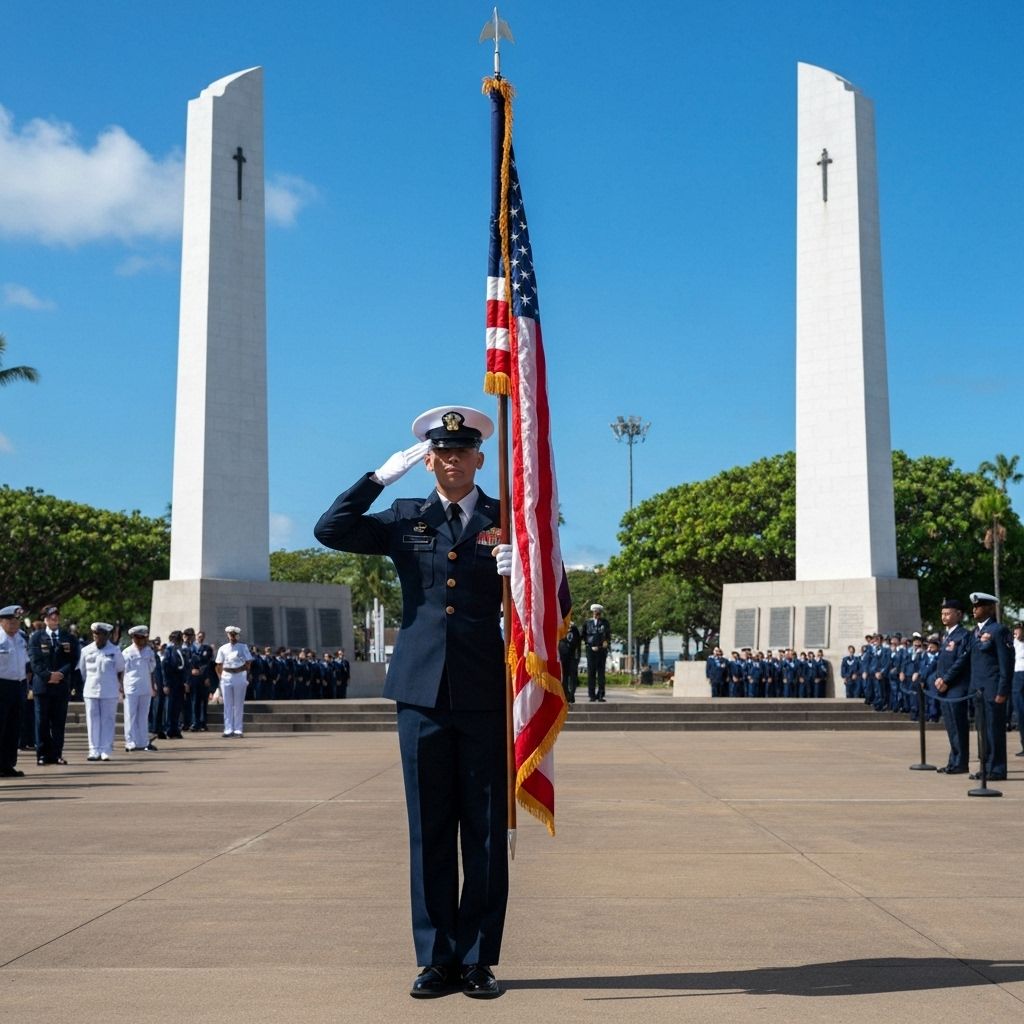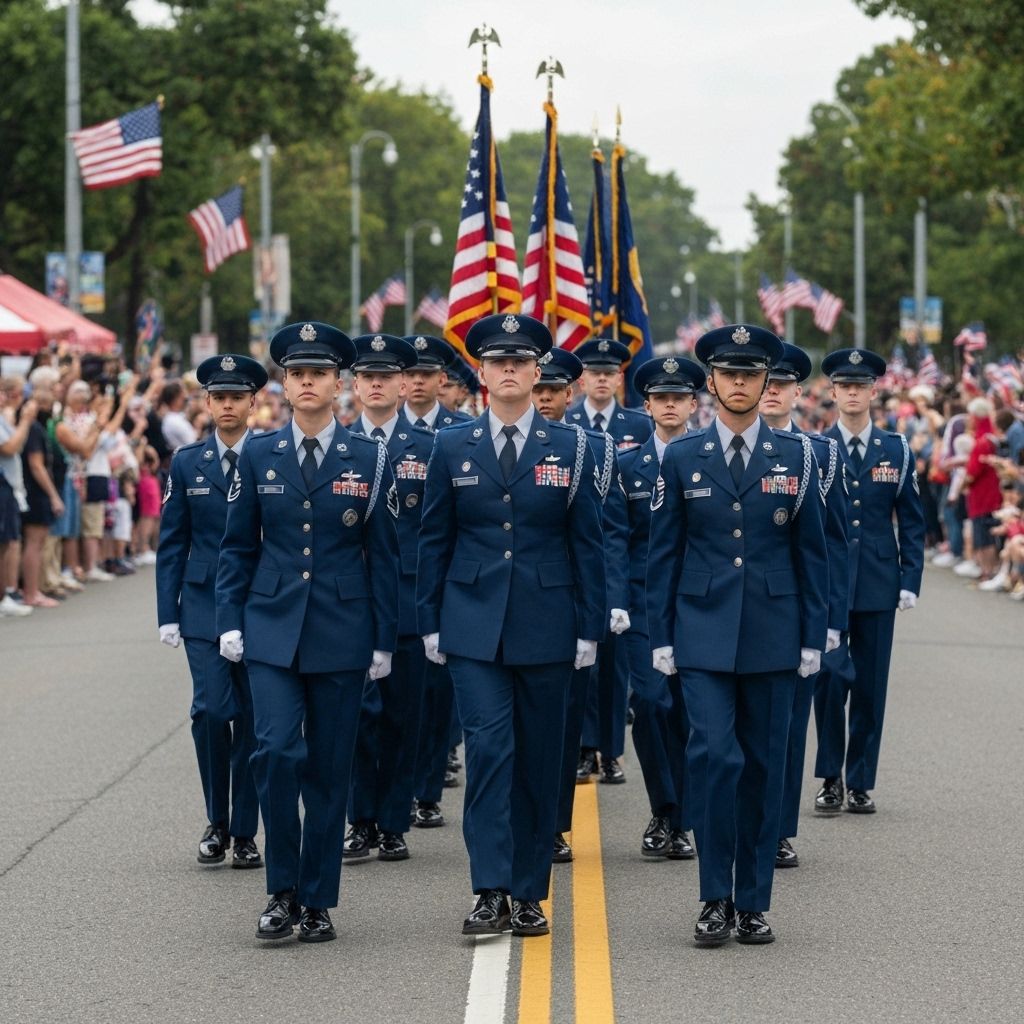Junior Reserve Officers' Training Corps
A comprehensive history of the JROTC program and its role in developing citizenship, leadership, and service to the United States

A Navy JROTC cadet salutes during the parading of the colors ceremony held at Pearl Harbor, Hawaii

Cadets from Bellevue East High School's AFJROTC marching at the 2016 Bellevue, Nebraska Veteran's Day parade
The Junior Reserve Officers' Training Corps (JROTC) is a federal program sponsored by the United States Armed Forces in high schools and also in some middle schools across the United States and at US military bases across the world. The program was originally created as part of the National Defense Act of 1916 and later expanded under the 1964 ROTC Vitalization Act.
According to Title 10, Section 2031 of the United States Code, the purpose of the Junior Reserve Officers' Training Corps is "to instill in students in [the United States] secondary educational institutions the values of citizenship, service to the United States, and personal responsibility and a sense of accomplishment."
Additional objectives established by the Department of the Army include:
- Developing citizenship and patriotism
- Developing self-reliance and responsiveness to all authority
- Improving the ability to communicate well both orally and in writing
- Developing an appreciation of the importance of physical fitness
- Increasing a respect for the role of the U.S. Armed Forces in support of national objectives
- Developing a knowledge of team building skills and basic military skills
Taking 1–3 years of the course grants cadets the ability to rank higher if they pursue a military career.
Important Note:
JROTC participation incurs no obligation to join the military. The program is designed to develop leadership skills and citizenship values that benefit all students, regardless of their future career paths.
Six of the eight branches of the Uniformed services of the United States maintain a Junior Reserve Officers' Training Corps, organized into units. There are a total of 3,275 units:
Army JROTC
1,600 units
Air Force JROTC
794 units
Navy JROTC
583 units
Marine Corps JROTC
260 units
Space Force JROTC
10 units
Coast Guard JROTC
14 units
Units are set up according to the layout of their parent service, often referred to as the "Chain of Command." Army JROTC units follow a company (usually the period the class is held in), battalion (all periods), and at larger events brigade (multiple battalions) structure.
The JROTC program stresses military discipline, with a curriculum that emphasizes study of military science and military history. Cadets typically wear their uniforms once or twice a week, usually standing for inspection.
Many cadets participate in extracurricular activities such as:
- Drill (unarmed, armed and regulation drill)
- Color Guard
- PT team or Raiders
- Rocketry (usually available in AFJROTC)
- Orienteering
- Rifle or pistol marksmanship programs
- Academic Team
- Drum corps
- Marching Band (although very rare)
There are also many summertime "leadership academies" for cadets hosted by various military installations. These academies include the JROTC Leadership and Academic Bowl (JLAB), and JROTC Cadet Leadership Challenge (JCLC), a physical fitness competition.
Cadets may be awarded ribbons, ribbon devices, medals and aiguillettes for participation in JROTC and team activities, as well as for personal academic and athletic achievement and leadership. Awards may be presented by organizations other than the cadet's JROTC program, such as:
- Military Officers Association of America
- American Veterans
- Order of the Daedalians
- American Legion
- National Rifle Association of America
Ribbons and medals are positioned in order of precedence, as prescribed by the Cadet Field Manual and the senior JROTC instructor.
Leadership and Academic Bowl (JLAB)
The JROTC Leadership and Academic Bowl is a national academic competition which is the largest of its kind for high schools in the country. There are three levels of the competition, with units who complete levels 1 and 2 successfully attending the last level at Catholic University of America in Washington D.C. Subjects covered include history, literature, current events and JROTC curriculum.
National High School Drill Team Championship
Established in 1982, the National High School Drill Team Championship is a joint-service exhibition drill competition for JROTC drill teams, held in Daytona Beach, Florida. It became an officially service-based sanctioned event when the U.S. Army Cadet Command became the sponsor in 1988.
Successful completion of a JROTC Program (1–3 years of classes) can lead to advanced rank upon enlistment in the Armed Forces. For example, upon completion of three years of Air Force JROTC, cadets may at their instructor's discretion enlist in the Air Force at the rank of Airman First Class (E-3).
Key Takeaway:
General Colin Powell said in his 1995 autobiography that "Inner-city kids, many from broken homes, found stability and role models in Junior ROTC." The program provides significant benefits including leadership development, discipline, teamwork, and opportunities for personal growth.